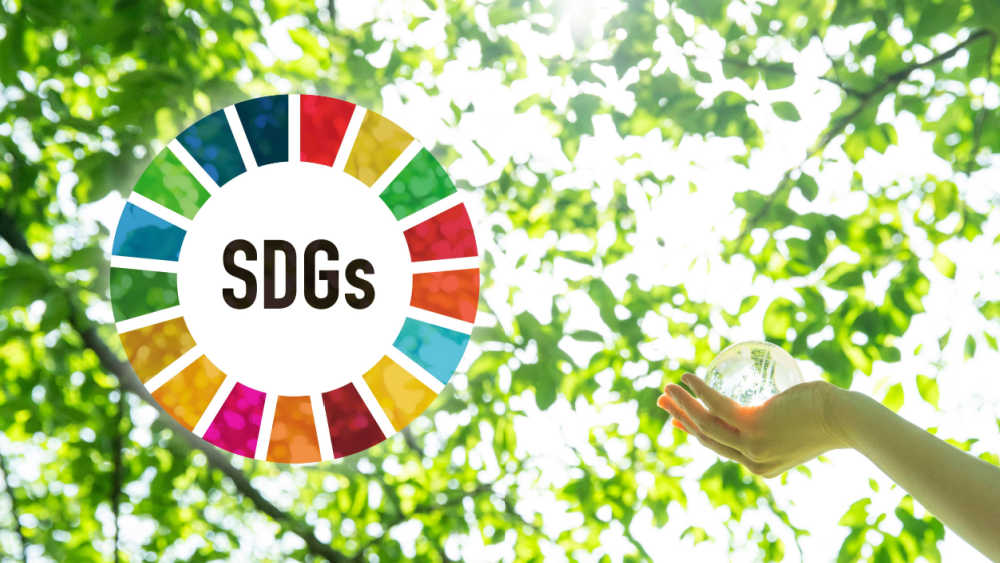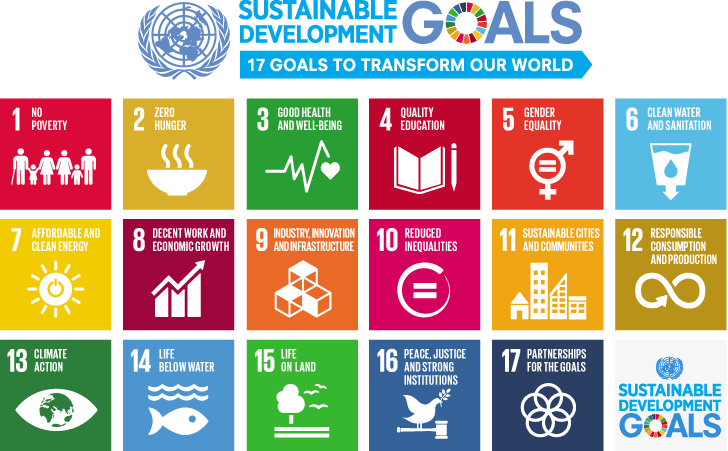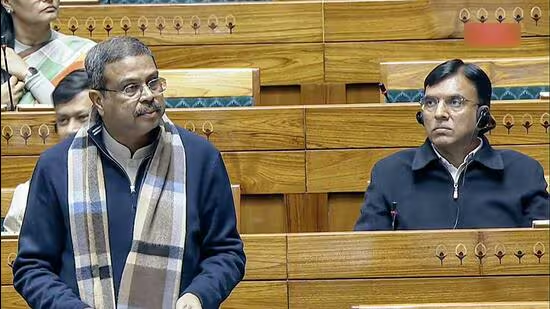





Copyright infringement not intended
Picture Courtesy: ec.europa.eu
Context: Despite the reaffirmation of commitment by world leaders, the global community is falling behind, with only 15% of the 169 targets likely to be met. Several challenges and dis-synergies have been identified, indicating a need for comprehensive strategies to address these issues.
Sustainable Development Goals
About
|
Goal 1: No Poverty |
●Goal 1 aims to eradicate extreme poverty by 2030. This includes implementing social protection systems, ensuring equal rights to economic resources, and providing access to basic services for all. ●Poverty is not just a lack of income but also a lack of access to education, healthcare, and basic infrastructure. Addressing poverty requires comprehensive strategies that empower marginalized communities. |
|
Goal 2: Zero Hunger |
●Goal 2 targets ending hunger, achieving food security, improving nutrition, and promoting sustainable agriculture. ●Achieving food security is not only about producing more food but also ensuring access and utilization. This goal emphasizes sustainable farming practices, climate resilience, and reducing food waste throughout the supply chain. |
|
Goal 3: Good Health and Well-being |
●Goal 3 focuses on promoting physical and mental health, reducing maternal and child mortality, and combating communicable diseases. ●Accessible healthcare, preventive measures, and addressing the social determinants of health are crucial components. The COVID-19 pandemic highlighted the importance of resilient healthcare systems and global collaboration in disease prevention and control. |
|
Goal 4: Quality Education |
●Goal 4 emphasizes inclusive and equitable quality education for all. It addresses challenges such as lack of infrastructure, teacher shortages, and gender disparities in education. ●Quality education equips individuals with the skills and knowledge necessary for sustainable development, fostering innovation and empowering communities. |
|
Goal 5: Gender Equality |
●Goal 5 advocates for gender equality and empowerment of all women and girls. This goal addresses discrimination, violence, and harmful practices based on gender. ●Achieving gender equality is not only a fundamental human right but also a necessary foundation for a peaceful, prosperous, and sustainable world. |
|
Goal 6: Clean Water and Sanitation |
●Goal 6 focuses on ensuring the availability and sustainable management of water and sanitation for all. This goal addresses water scarcity, water quality, and inadequate sanitation facilities. ●Access to clean water and sanitation is essential for health, education, and overall well-being, particularly in vulnerable communities. |
|
Goal 7: Affordable and Clean Energy |
●Goal 7 promotes access to affordable, reliable, sustainable, and modern energy for all. Transitioning to clean energy sources, improving energy efficiency, and expanding energy infrastructure are crucial steps. ●Sustainable energy solutions mitigate climate change, reduce pollution, and enhance economic opportunities. |
|
Goal 8: Decent Work and Economic Growth |
●Goal 8 emphasizes promoting sustained, inclusive, and sustainable economic growth, full and productive employment, and decent work for all. This goal addresses issues like unemployment, underemployment, and informal labour. ● Decent work opportunities are essential for poverty reduction and building resilient economies. |
|
Goal 9: Industry, Innovation, and Infrastructure |
●Goal 9 focuses on building resilient infrastructure, promoting inclusive and sustainable industrialization, and fostering innovation. Investment in infrastructure, research, and technology is essential for economic development. ●Sustainable industrialization must prioritize environmental conservation and social inclusivity. |
|
Goal 10: Reduced Inequalities |
●Goal 10 aims to reduce inequality within and among countries. This goal addresses income inequality, social exclusion, and disparities in access to resources and opportunities. ●Addressing inequalities requires policy interventions, social protection programs, and inclusive economic growth strategies. |
|
Goal 11: Sustainable Cities and Communities |
●Goal 11 advocates for making cities and human settlements inclusive, safe, resilient, and sustainable. This goal addresses challenges such as slums, inadequate housing, and insufficient urban planning. ●Sustainable urban development is vital for environmental conservation, efficient resource use, and improving the quality of life for urban dwellers. |
|
Goal 12: Responsible Consumption and Production |
●Goal 12 promotes sustainable consumption and production patterns. This goal addresses issues like waste generation, pollution, and inefficient resource use. ● Responsible consumption involves raising awareness, promoting sustainable lifestyles, and encouraging businesses to adopt eco-friendly practices. |
|
Goal 13: Climate Action |
●Goal 13 urges urgent action to combat climate change and its impacts. This goal includes measures to mitigate greenhouse gas emissions, adapt to climate change, and promote climate resilience. ●Climate action requires international cooperation, policy alignment, and technological innovation to transition to a low-carbon economy. |
|
Goal 14: Life Below Water |
●Goal 14 focuses on conserving and sustainably using marine resources for sustainable development. This goal addresses overfishing, marine pollution, and habitat destruction. ●Preserving marine ecosystems is crucial for biodiversity, food security, and the livelihoods of millions of people who depend on oceans and coastal areas. |
|
Goal 15: Life on Land |
●Goal 15 aims to protect, restore, and promote sustainable use of terrestrial ecosystems. This goal addresses deforestation, desertification, and loss of biodiversity. ●Protecting terrestrial ecosystems is vital for biodiversity conservation, climate regulation, and the well-being of both humans and wildlife. |
|
Goal 16: Peace, Justice, and Strong Institutions |
●Goal 16 promotes peaceful and inclusive societies, access to justice for all, and effective, accountable, and inclusive institutions. This goal addresses issues like corruption, violence, and lack of access to justice. ●Peaceful societies are essential for sustainable development, as they create an environment where people can thrive, innovate, and collaborate. |
|
Goal 17: Partnerships for the Goals
|
●Goal 17 emphasizes the importance of global partnerships and collaboration to achieve the SDGs. This goal encourages cooperation between governments, the private sector, and civil society. ●Partnerships are essential for mobilizing resources, sharing knowledge, and leveraging expertise to address complex global challenges. |

Copyright infringement not intended
Picture Courtesy: www.un.org
Significance of Sustainable Development Goals (SDGs)
Global Cooperation
Holistic Approach
Leaving No One Behind
Environmental Sustainability
Economic Growth and Innovation
Quality of Life
Peace and Stability
Long-term Planning
Accountability
Inspiration for Innovation
Key challenges faced in the pursuit of SDGs:
Insufficient Resources
Inequality and Discrimination
Climate Change
Political Will and Governance
Conflict and Humanitarian Crises
Education and Awareness
Data and Monitoring
Natural Resource Depletion
Migration and Urbanization
Technological Gap
Strategies to accelerate progress toward achieving the SDGs
Global Collaboration
Policy Alignment
Inclusive Development
Empowering Local Communities
Education and Awareness
Sustainable Business Practices
Innovation and Technology
Climate Action
Data and Monitoring
Long-term Investment
Capacity Building
Policy Advocacy
Resilience Building
Conclusion
Must Read Articles:
TRACKING SDG7: https://www.iasgyan.in/daily-current-affairs/tracking-sdg7
|
PRACTICE QUESTION Q. What are the key strategies and initiatives that can be implemented at local, national, and international levels to effectively promote and achieve the Sustainable Development Goals (SDGs)? |





© 2025 iasgyan. All right reserved